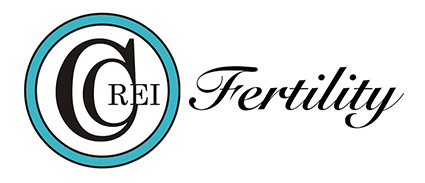Your Health Care Team
Andrologist: A medical professional specializing in male infertility and assisted reproductive technology (ART).
Embryologist: A specialist in embryo development.
Fertility Nurse Specialist: A nurse with special training in caring for people undergoing infertility treatments. Often coordinates care and serves as a primary contact person.
Reproductive Endocrinologist: A gynecologist who is subspecialty fellowship trained in women’s infertility workups.
Ultrasonographer: A technician qualified to perform abdominal and Transvaginal ultrasounds to determine size, shape and dimensions of pelvic organs, ovarian follicle production, and the existence of tumors, enlargements or inflammations.
Urologist: A M.D. specializing in male and female urinary tract problems who is particularly knowledgeable about penile and testicular function.
Lab Tests & Procedures
Basal body temperature (BBT): A woman’s temperature upon waking in the morning before activity. Taken orally, it helps to determine ovulation. A special thermometer, available in pharmacies, must be used for the test.
Embryo: A fertilized egg from conception to the eighth embryologic week.
Endometrial Biopsy: The removal of a small fragment of uterine tissue to study hormonal activity. The results indicate whether there are adequate changes in the endometrial tissue to support a pregnancy.
Estradiol: A form of estrogen. This hormone is produced by developing follicles in the ovary. Measuring levels helps determine progressive growth of the follicles during ovulation.
FSH: Follicle Stimulating Hormone stimulates the ovary to ripen a follicle for ovulation.
GIFT: Gamete intrafallopian transfer involves combining sperm and eggs outside the body and immediately placing them into the fallopian tubes to achieve fertilization.
Hysterosalpingogram (HSG): An x-ray in which dye is injected into the uterus to show the body of the uterus and whether the fallopian tubes are open.
Hysteroscopy: An examination of the inside of the uterus through a fiber optic telescope inserted through the vagina and cervical canal.
IUI: Intrauterine insemination is the insertion of sperm, which have been carefully washed and prepared, directly into the uterus.
IVF: Performed in the laboratory, in vitro (in glass) fertilization involves the removal of eggs from ripe follicles and their fertilization by sperm cells outside the body.
Laparoscopy: use of a surgical instrument inserted through a small incision below the navel to allow direct visualization of the ovaries and exterior of the fallopian tubes and uterus.
Post-coital test (PCT): Also called a Huhner test. Test in which cervical secretions are obtained following intercourse and analyzed under a microscope to discern problems with the interaction of sperm and cervical mucus.
Progesterone: A female hormone secreted after ovulation has occurred. It prepares the lining of the uterus for implantation of a fertilized egg.
Prolactin: Female hormone responsible for milk production in nursing mothers. Can be elevated for other reasons such as an underactive thyroid. Elevated prolactin can stop ovulation.
TSH: Thyroid stimulating hormone is released by the pituitary gland to increase thyroid hormone production. TSH results can reveal whether thyroid function is normal, which is necessary for normal ovulation.
Testosterone: Male sex hormone produced in the testicles.
Ultrasound: A technique using sound waves to visualize the uterus and ovaries, a fetus in the uterus or the growth of ovarian follicles during infertility treatment.
ZIFT: Zygote intrafallopian transfer involves in vitro fertilization with a transfer of the zygote into the fallopian tube. The zygote is an egg that has been fertilized by has not yet divided.
Other Terms
Cervix: Lower part of the uterus that extends into the vagina. Sperm travel through the cervix to enter the uterus.
Conception: The name given to the time when a sperm fertilizes an egg.
Corpus luteum: The empty follicle after ovulation which produces progesterone to support the endometrium for embryo implantation.
Endometriosis: A condition where cells lining the uterus (endometrium) are misplaced and grow outside the uterus and attach to other organs such as the fallopian tubes and ovaries.
Endometrium: The inner lining of the uterus.
Embryo: A fertilized egg from conception to the eighth embryologic week.
Fallopian tubes: The pair of narrow tubes that carries the egg from the ovaries in to the uterus. The sperm normally fertilizes the egg in the fallopian tubes.
Fertilization: The penetration of the egg by the sperm.
Fibroid: A benign tumor of the uterine muscle and connective tissue.
Follicular Phase: The phase of a woman’s cycle that begins on the first day of menstruation and continues until ovulation.
hCG: Human chorionic gonadotropin, the hormone that works to release the mature eggs from their follicles (this is called ovulation).
Gonadotropins: Hormones, such as Luteinizing Hormone (LH) and Follicle Stimulating Hormone (FSH), that are normally secreted by the pituitary gland to regulate reproduction.
Implantation: The embedding of the embryo in the inner lining (endometrium) of the uterus, where it grows and is nourished during pregnancy.
Infertility: The inability for a woman to conceive a pregnancy after one year of unprotected sexual intercourse.
Luteal phase: The phase of the woman’s cycle that begins after ovulation and continues until the first day of menstruation.
Menstruation: The shedding of the uterine lining, a normal event that occurs once a month in the absence of a pregnancy.
Ovarian Cyst: Fluid-filled sacs in ovary.
Ovulation: Release of an egg from its follicle in ovary.
Ovulatory dysfunction: Any set of conditions where a mature egg is not released from the follicle.
Ovulation induction: Use of hormone therapy to stimulate oocyte (egg) development and release.
Ovum: The reproductive cell (egg) that contains the DNA from the female partner.
Pituitary gland: Called the “master gland” it is located in the brain and controls many important body functions including secretion of the important hormones like FSH and LH.
Sperm: The microscopic male reproductive cell that contains DNA form the male partner.
Sperm morphology: Size and shape of individual sperm. Normal sperm have an enzyme-coated head, middle piece and whip-like tail.
Sperm motility: The ability of sperm to swim and move progressively. Motility is one of the most important determining factors in the sperms ability to fertilize an egg.
STD: Sexually transmitted diseases include Chlamydia, herpes, gonorrhea, syphilis and other conditions.
Uterus: The hollow muscular organ in the pelvis where the embryo implants and the fetus grows during pregnancy. The uterus is sometimes called the womb.


Follow Us!